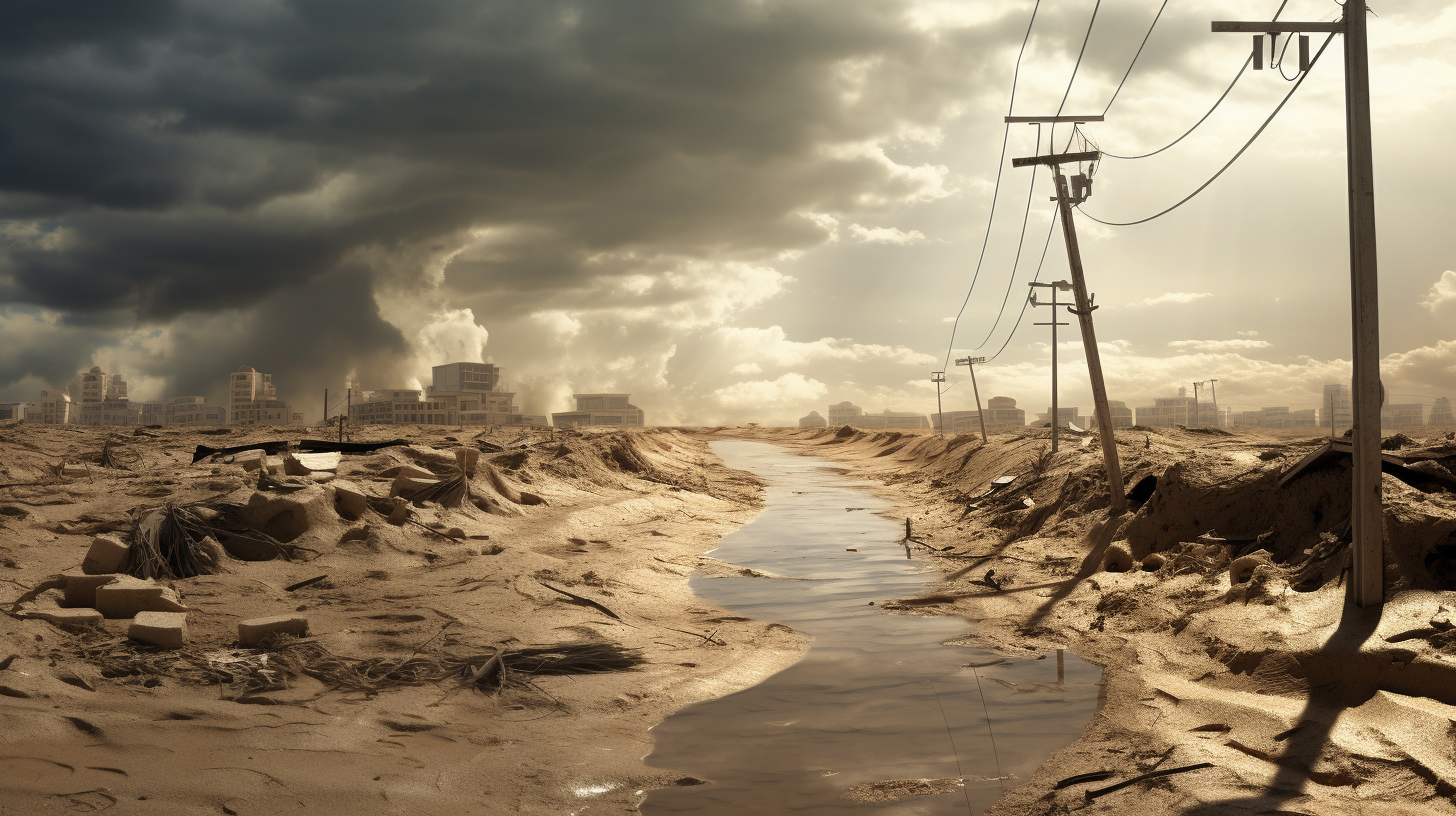In a world already tormented by paradoxical climate extremes, the forecast is no longer the simple staple of morning news; it has become a siren call heralding chaos. In recent times, the juxtaposition of arid desolation with sudden aquatic fury has redefined the idea of normalcy for communities worldwide. This climate roulette oscillates between the dust-laden whispers of advancing deserts and the deafening roar of sky torrents, erasing any illusion of equilibrium in our ecological system.
One might recall the harrowing images of desiccate villages now replaced by the recent memories of submerged cityscapes. As we observed in ‘Deserts Advance as Life Retreats’, entire communities have adapted to the encroaching desert sands, imagining innovative ways to trap moisture from the air and stave off the relentless sun. Yet, as ‘Sky Torrents – The Catastrophic New Normal of Rainfall’ pointed out, those same communities are now navigating through the aftermath of violent deluges that have obliterated their hard-won gains against desertification.
The very notion of adaptability is questioned when homes must be engineered to both resist sandstorms and float above floodwaters. Architects and town planners face the Sisyphean task of rebuilding cities that can withstand the increasingly bipolar moods of Mother Nature. But is this approach a sustainable gambit or merely a stopgap salvaging what we can from the grips of a climate calamity?
Scientific projections are dire, with climate models illustrating that the extremes we are witnessing today could escalate further. The confluence of human-induced climate change and natural variability creates scenarios where predictability is a long-forgotten luxury. Field researchers and climate scientists alike paint a grim future where rain belts and dry zones shift erratically, leaving little room for long-term agricultural and urban planning.
Speaking to the heart of our climatic paradox is the tale of a once fertile land, known throughout history for its bountiful harvests, now oscillates between barrenness and flood. Farmers who adapted ancient techniques to coax life from sand are now watching their efforts wash away. “It’s as if the sky is laughing at us,” a local farmer muses with a resigned smile that barely conceals a reservoir of despair. “One season, we pray for rain. The next, we pray it stops.”
Stark as this reality is, it belies the creativity and resilience that humans have historically displayed in the face of existential threats. Adaptation projects are sprouting up, heralding a wave of ingenuity – from floating agricultural pods to reimagined water storage systems. But is it enough? Can we innovate our way out of the corner we’ve painted ourselves into, or are these commendable efforts too little, too late?
In the face of such climate uncertainty, preparedness has become a complex calculus of numerous variables. There is no one-size-fits-all solution, no universal blueprint to follow. What remains is a patchwork of local responses, a testament to the human capacity for hope even against overwhelming odds. This hope, however, is carefully tucked away, overshadowed by the scale of transformation that our planet is undergoing.
As the extremes of droughts and floods carve their narratives into the land, one truth emerges starkly: uncertainty and variability have become the new norms of our environmental lexicon. The questions that haunt us now are not only how we will adapt to the present but also how we prepare for a future that defies historical precedents.
In conclusion, as we look out upon the ever-changing landscape of our beleaguered Earth, we find ourselves at a philosophical crossroads. To adapt is to survive, but to what end? For how long can humanity dance on the knife-edge of climatic unpredictability? ‘Flash Floods or Desert Sands – Is Climate Uncertainty Our New Normal?’ posits a poignant reflection on this mercurial state of existence, pressing upon the consciousness of an ever-adaptive, yet increasingly strained humanity.
